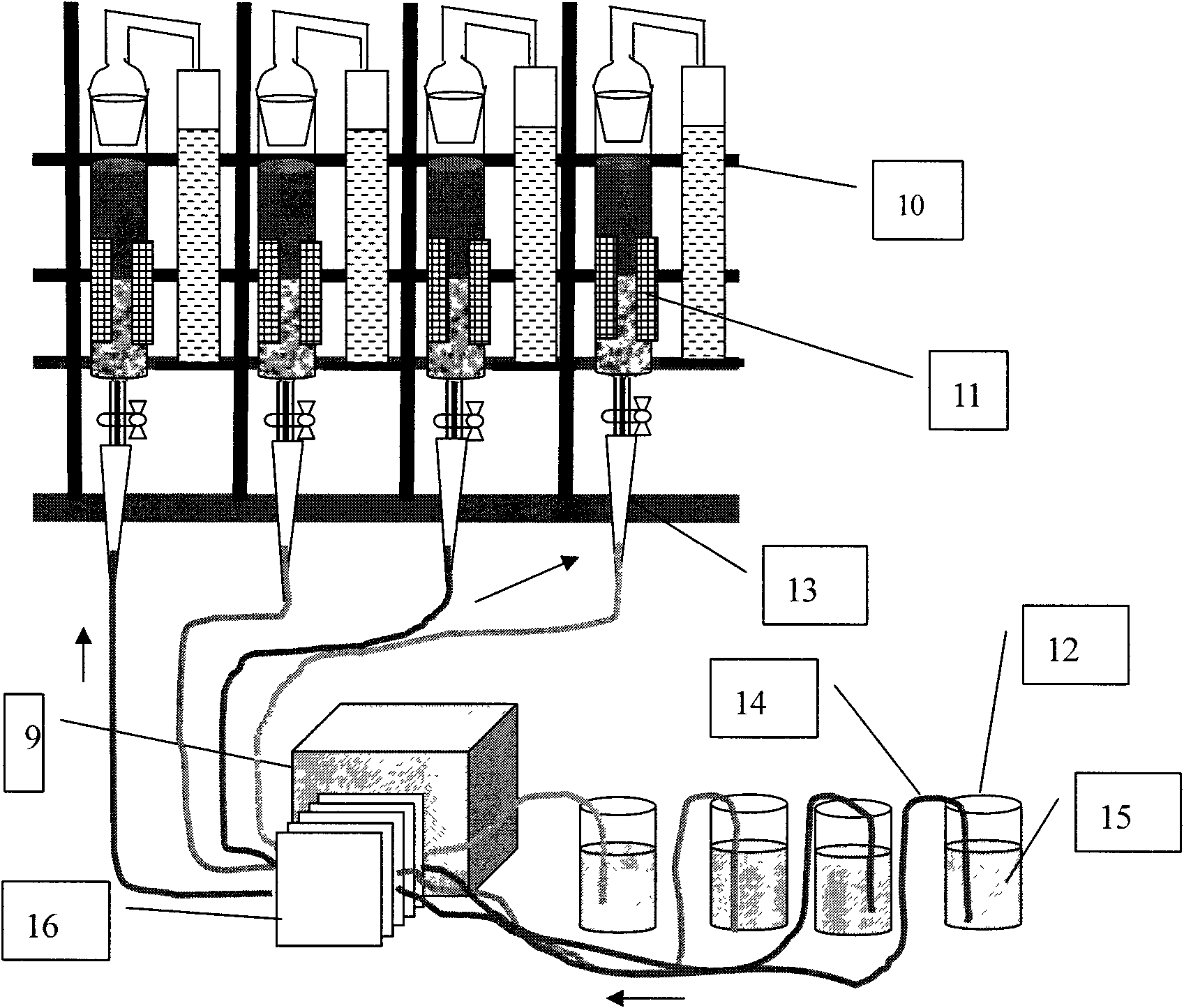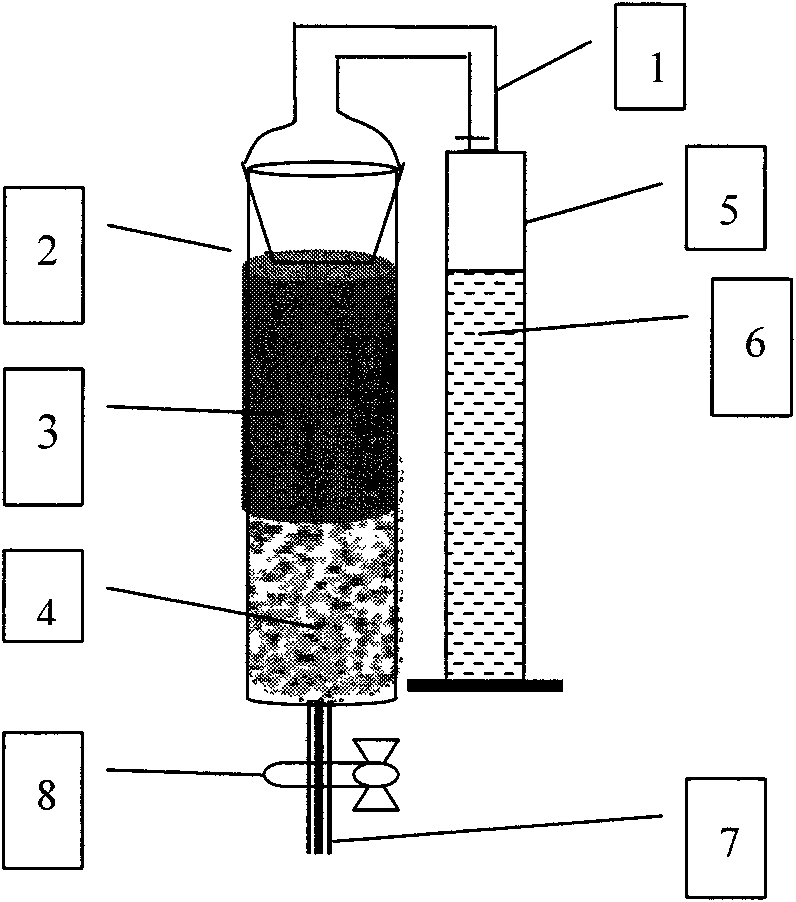Leaching and removing method and device of PAHs in polluted soil
A technology of polluted soil and leaching, which is applied in the restoration of polluted soil and other directions, can solve the problems of unreported treatment technology and treatment facilities, difficult control of environmental conditions, long repair time, etc., and achieves good removal effect, simple structure, Applicable high performance effect
- Summary
- Abstract
- Description
- Claims
- Application Information
AI Technical Summary
Problems solved by technology
Method used
Image
Examples
Embodiment 1
[0022] figure 1 and 2 As shown, the rinsing removal device: includes a rinsing column 2, a drain pipe 1 and a collection cup 5, the lower end of the leaching column 2 is provided with a liquid inlet 7 controlled by a switch 8, and the upper end is connected to the collection cup through the drain pipe 1. 5 phase connection. The switch is generally open and is used to control eluent from entering the column.
[0023] The drain pipe 1 is n-shaped, one end of which is connected to the upper end of the rinsing column 2 , and the other end is connected to the collection cup 5 .
[0024] The liquid inlet 7 is connected to one end of the infusion tube 14 through the reducing head 13 , and the infusion tube 14 is connected to the liquid storage bottle 12 through the infusion tube channel 16 of the peristaltic pump 9 . The rinsing and removing device is a plurality of infusion tubes 14 passing through the infusion tube channels 16 connected in parallel to the peristaltic pump 9; Th...
Embodiment 2
[0034] Removal method:
[0035] The polluted soil was collected from the high concentration PAHs polluted soil near the Beijing coking plant.
[0036] Lay glass wool and glass beads above and below the contaminated soil placed in the eluent column to prevent the contaminated soil from moving up and down with the eluent, and then the eluent moves from bottom to top in the eluent column, and the discharge after leaching The liquid enters the collection cup through the drain pipe, and then washes the contaminated soil to remove the PAHs pollutants. The eluent is biodiesel, and the eluent speed is 0.10ml / min. The eluent: soil (v / w) is 2 : 1.
[0037] The leaching column 2 is made of glass material with a height of 20cm, a diameter of 3cm, and a column glass material thickness of 3mm, which is used to treat polluted soil. The leaching column is first loaded with glass beads, the glass beads have a diameter of 3 mm, 3.5 mm glass wool is placed on the glass beads, and polluted soil...
Embodiment 3
[0045] Removal method:
[0046] The polluted soil was collected from the high concentration PAHs polluted soil near the Beijing coking plant. Lay glass wool and glass beads above and below the contaminated soil placed in the eluent column to prevent the contaminated soil from moving up and down with the eluent, and then the eluent moves from bottom to top in the eluent column, and the discharge after leaching The liquid enters the collection cup through the drain pipe, and then rinses the contaminated soil to remove the PAHs pollutants. The leaching agent is TW80 aqueous solution. The TW80 (purchased from Sinopharm Chemical Reagent Co., Ltd.), the concentration of the TW80 aqueous solution is 10%, the leaching speed is 0.15ml / min, and the leaching agent:soil (v / w) is 2:1.
[0047] The leaching column 2 is made of glass material with a height of 20cm, a diameter of 3cm, and a column glass material thickness of 3mm, which is used to treat polluted soil. The leaching column is ...
PUM
| Property | Measurement | Unit |
|---|---|---|
| Diameter | aaaaa | aaaaa |
| The inside diameter of | aaaaa | aaaaa |
Abstract
Description
Claims
Application Information
 Login to View More
Login to View More - R&D
- Intellectual Property
- Life Sciences
- Materials
- Tech Scout
- Unparalleled Data Quality
- Higher Quality Content
- 60% Fewer Hallucinations
Browse by: Latest US Patents, China's latest patents, Technical Efficacy Thesaurus, Application Domain, Technology Topic, Popular Technical Reports.
© 2025 PatSnap. All rights reserved.Legal|Privacy policy|Modern Slavery Act Transparency Statement|Sitemap|About US| Contact US: help@patsnap.com



